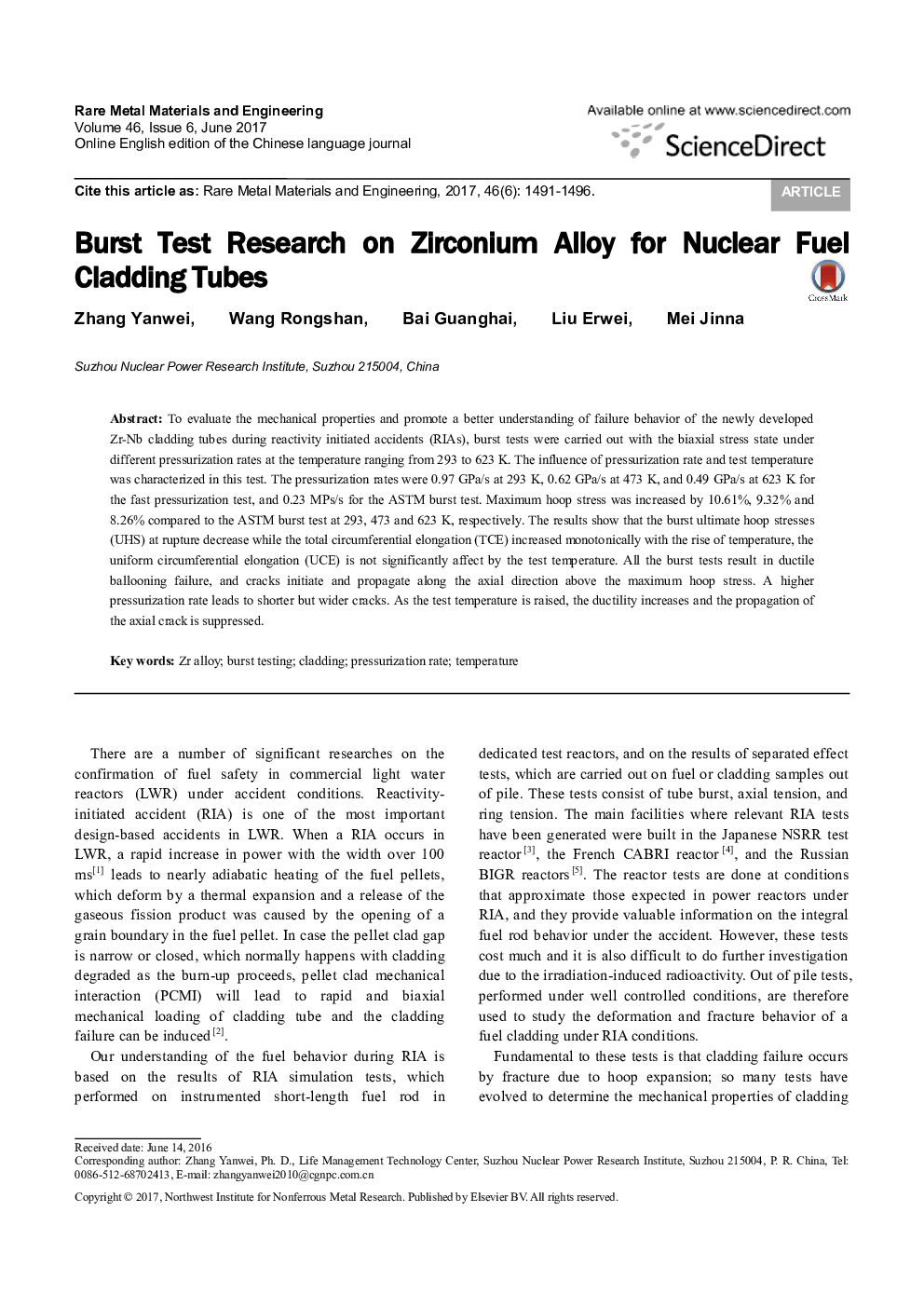| Article ID | Journal | Published Year | Pages | File Type |
|---|---|---|---|---|
| 7210354 | Rare Metal Materials and Engineering | 2017 | 6 Pages |
Abstract
To evaluate the mechanical properties and promote a better understanding of failure behavior of the newly developed Zr-Nb cladding tubes during reactivity initiated accidents (RIAs), burst tests were carried out with the biaxial stress state under different pressurization rates at the temperature ranging from 293 to 623 K. The influence of pressurization rate and test temperature was characterized in this test. The pressurization rates were 0.97 GPa/s at 293 K, 0.62 GPa/s at 473 K, and 0.49 GPa/s at 623 K for the fast pressurization test, and 0.23 MPs/s for the ASTM burst test. Maximum hoop stress was increased by 10.61%, 9.32% and 8.26% compared to the ASTM burst test at 293, 473 and 623 K, respectively. The results show that the burst ultimate hoop stresses (UHS) at rupture decrease while the total circumferential elongation (TCE) increased monotonically with the rise of temperature, the uniform circumferential elongation (UCE) is not significantly affect by the test temperature. All the burst tests result in ductile ballooning failure, and cracks initiate and propagate along the axial direction above the maximum hoop stress. A higher pressurization rate leads to shorter but wider cracks. As the test temperature is raised, the ductility increases and the propagation of the axial crack is suppressed.
Related Topics
Physical Sciences and Engineering
Engineering
Mechanics of Materials
Authors
Zhang Yanwei, Wang Rongshan, Bai Guanghai, Liu Erwei, Mei Jinna,
